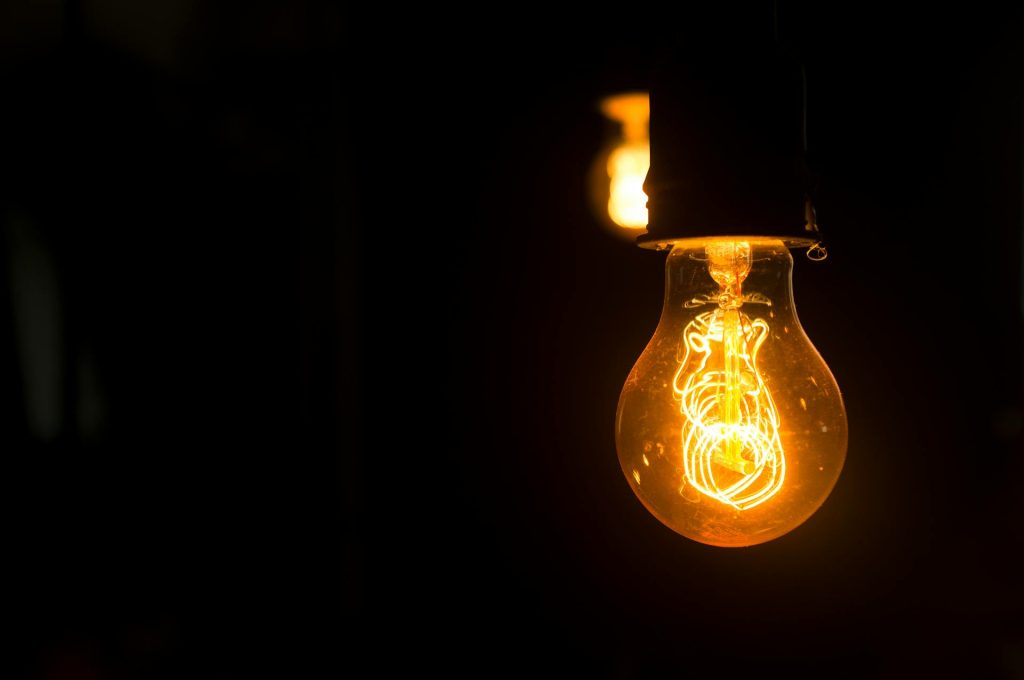At a glance
- Explore the regional variations in standby energy consumption, comparing electricity usage in VIC, QLD, NSW, SA, and ACT.
- Discover actionable tips to minimise standby power usage, including smart plug solutions, scheduled power-downs, and choosing energy-efficient appliances.
- Uncover the future of standby energy with insights into emerging technologies.
In today’s fast-paced world, the convenience of having our appliances on standby is undeniable. Quick activation without waiting seems like a modern luxury, but what about the hidden costs of this seemingly innocuous practice?
This comprehensive guide highlights the often underestimated consequences of leaving appliances on standby, particularly the financial impact on your electricity bills.
The Surprising Truth Of Standby Energy Consumption
Many of us are blissfully unaware of the energy consumption when our appliances are in standby mode. In this era of technological marvels, devices continue to draw power even when seemingly turned off – a phenomenon known as standby energy consumption. It’s not just a minor trickle; it’s a steady stream that collectively contributes to a significant portion of your electricity bill.
Unpacking the Numbers: Comparing Electricity Consumption
Let’s compare electricity usage in various locations – VIC, QLD, NSW, SA, and ACT- to understand the impact truly. Standby energy consumption varies across regions due to different energy grids and climate conditions. By scrutinising the specific figures, we can discern patterns that will guide us in minimising energy waste effectively, save energy, and reduce your energy bill.
Business and Residential Electricity
For businesses, the stakes are higher when it comes to electricity bills. The business electricity comparison is crucial, as it can significantly affect the bottom line. This guide explores the nuances of standby energy consumption in business settings, providing insights into tailored solutions to cut unnecessary costs.
On the residential front, understanding the specifics of residential electricity consumption while appliances are on standby is equally vital. Households can make informed decisions to mitigate financial implications by comparing figures in different regions.
| Appliance | Standby Power (Watts) | Annual Consumption (kWh) | Estimated Annual Cost |
| Television (LED) | 0.5 – 5 | 4 – 40 | $1 – $10 |
| Set-top box | 2 – 10 | 15 – 75 | $4 – $20 |
| Laptop | 0.5 – 5 | 4 – 40 | $1 – $10 |
| Computer (desktop) | 1 – 15 | 8 – 110 | $2 – $30 |
| Game console | 1 – 10 | 8 – 80 | $2 – $20 |
| Phone charger | 0.1 – 1 | 1 – 8 | $< $1 – $2 |
| Printer | 1 – 5 | 8 – 40 | $2 – $10 |
| Microwave | 3 – 5 | 20 – 40 | $5 – $10 |
| Toaster | 1 – 3 | 8 – 25 | $2 – $7 |
| Kettle | 1 – 2 | 8 – 15 | $2 – $4 |
The Regional Variations
When we compare electricity consumption in different regions, it’s essential to consider the intricacies of each area. Compare electricity in Victoria (VIC), for instance, the standby energy consumption might be influenced by the colder climate, leading to increased usage of heating appliances. Compare electricity in Queensland (QLD) with its warmer temperatures, and you may see a surge in standby consumption related to cooling devices.
Compare electricity in New South Wales (NSW) might have a balance between heating and cooling needs, impacting the standby energy landscape. Compare electricity in South Australia (SA), known for its diverse climate, could exhibit varying standby patterns. Comparing electricity in The Australian Capital Territory (ACT) with its unique energy regulations might present distinctive challenges in minimising standby energy costs for businesses and households.
Navigating Business Electricity Comparison
Understanding how business electricity comparison occurs in different regions is crucial for making informed decisions. Factors such as the type of business, the industry it operates in, and the scale of operations can influence standby energy costs.
For instance, a manufacturing unit in NSW might have different standby energy consumption patterns compared to a tech startup in Victoria. Businesses can tailor their strategies to minimise costs effectively by delving into the specifics.
Insights into Residential Electricity Consumption
Similarly, exploring the nuances of residential electricity usage in different regions unveils valuable insights. Housing types, prevalent weather conditions, and lifestyle patterns can impact standby energy consumption. With its diverse climate, SA might have distinct standby challenges compared to homes in QLD with consistent warm weather. By dissecting the regional variations, households can adopt targeted approaches to reduce standby energy costs.
Legislative Impact on Standby Costs
In addition to climatic influences, legislative variations in each region can impact standby energy costs. The Australian Capital Territory, for instance, may have specific regulations governing standby energy consumption that businesses must adhere to. Understanding and complying with these regulations not only ensures legal compliance but also aids in optimising standby energy costs. This additional layer of insight further emphasises the need for a comprehensive understanding of regional variations.
Practical Tips to Minimise Standby Power Usage
Now that we’ve established the significance of standby energy consumption, let’s delve into practical strategies to minimise this hidden cost. Implementing these tips can serve as a road map for households and businesses to reduce energy waste and, consequently, reduce electricity costs.
1. Smart Plug Solutions
Investing in smart plugs can be a game-changer. These nifty devices allow you to control the power supply to your appliances remotely. You can effectively eliminate standby energy consumption by cutting off power when not in use. With advancements in technology, these devices offer more than just remote control.
Some smart plugs come with artificial intelligence that learns usage patterns and optimises power supply accordingly. This ensures that standby energy consumption is minimised without sacrificing convenience. Smart plugs with customisation options allow users to set specific energy-saving modes for different types of devices. Tailoring the power supply based on the device’s requirements ensures optimal efficiency.
2. Scheduled Power Downs
Creating a schedule for powering down appliances can be a simple yet powerful strategy. Certain devices might not need to be on standby during specific hours. By programming them to power down during periods of inactivity, you can make substantial savings over time.
Users can create personalised schedules based on their daily routines. For instance, if the household is typically vacant during working hours, scheduling power-downs minimises standby energy consumption when not needed. This level of customisation empowers users to align energy-saving practices with their lifestyles.
3. Integrating Smart Home Systems
For a more streamlined approach, integrating scheduled power-downs with smart home systems can be highly effective. Smart home platforms allow users to centralise control over various devices, making managing and monitoring standby energy consumption easier. Users can achieve comprehensive energy efficiency by synchronising power-downs with overall home automation.
4. Energy-Efficient Appliances
When it’s time to replace or upgrade your appliances, opt for energy-efficient models. These devices are designed to consume less power, including during standby mode. While the initial investment might be higher, the long-term savings on your electricity bill make it a financially sound decision.
Understanding Energy Labels
Selecting energy-efficient appliances begins with understanding energy labels. Appliances are categorised based on their energy efficiency, ranging from A+++ to D. Aim for devices with higher energy ratings, as they consume less power during operation and standby. The energy label serves as a quick reference guide for consumers looking to make environmentally conscious choices.
Long-Term Financial Benefits
Investing in energy-efficient appliances is an investment in long-term financial savings. While the upfront cost might be higher, the reduced energy consumption pays off over the appliance’s lifespan. Consider it a strategic move towards sustainability that benefits your wallet and contributes to a greener future.
5. Conscious Consumption Habits
Simple changes in consumption habits can have a significant impact. Encourage turning off appliances entirely instead of relying on standby mode. Additionally, fostering a culture of energy consciousness within households and businesses can contribute to a collective effort to reduce electricity bills.
The Power of Habit
Breaking the habit of relying on standby mode requires a conscious effort. Implementing a “power down” routine before leaving a room or bedtime can become a habit over time. By ingraining these practices into daily life, households can significantly reduce standby energy consumption without much disruption to their routines.
6. Employee Engagement in Businesses
In a business setting, the power of conscious consumption extends to employee engagement. Educating and involving employees in energy-saving initiatives can create a culture of responsibility. Simple practices like turning off computers and peripherals at the end of the workday collectively reduce standby energy costs for businesses.
The Future of Standby Energy Management
Looking ahead, innovations in energy management promise even more effective ways to tackle standby energy consumption. . Emerging technologies, such as machine learning algorithms and advanced sensors, can further optimise power usage in standby mode. Businesses and households should stay abreast of these developments to continually refine their strategies for reducing standby energy costs.
Integration of Artificial Intelligence
Artificial intelligence (AI) is poised to revolutionise standby energy management. The ability of AI algorithms to learn and adapt to specific usage patterns enables even more precise control over standby power consumption. As AI evolves, expect to see smart plugs and appliances equipped with advanced AI features that make real-time decisions to minimise energy waste.
Advancements in Energy Storage
Innovations in energy storage technologies are another frontier in standby energy management. Improved battery systems allow for storing excess energy generated during non-peak hours, which can then be used during periods of high demand. This contributes to overall energy efficiency and helps reduce standby energy costs for both businesses and households.
In conclusion, the hidden costs of leaving appliances on standby are not to be underestimated. By understanding the specifics of standby energy consumption in different locations and across business and residential settings, individuals can make informed decisions to mitigate these costs. Implementing practical tips, such as using smart plugs, scheduling power-downs, opting for energy-efficient appliances, and cultivating conscious consumption habits, can pave the way for substantial savings.
Head over to Select and Switch and compare free electricity plans today! Find the perfect fit for your region and needs, and save those hard-earned dollars. Remember, every watt saved contributes to a brighter (and cheaper) future for you and the planet.
So, don’t let standby power drain your wallet and the environment. Take control, compare offers, and make your energy conscious!
-
Comprehensive insights into the energy bill relief fund in Australia
5 May 2024
Energy
-
Find the best electricity deal for electric vehicle charging
28 April 2024
Gas & Electricity
-
Understanding energy demand charges: A guide for business owners
25 April 2024
Energy


